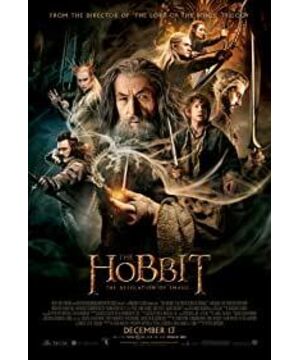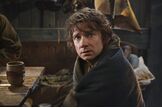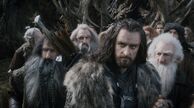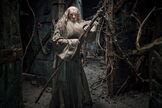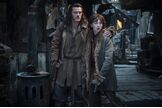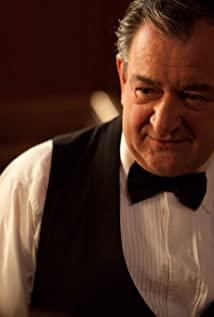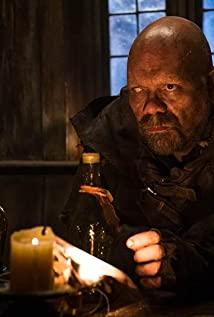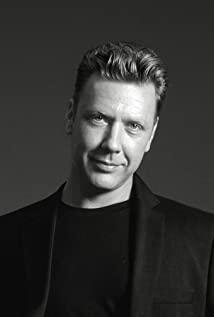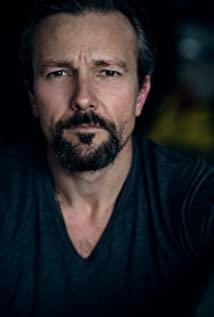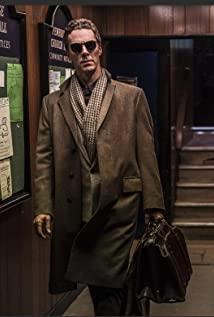Since the decision to adapt "The Hobbit" into a trilogy, Peter Jackson had to face accusations of "watering" from diehard fans. Judging from the original author Tolkien's creative process, "The Hobbit" wrote Before the voluminous volume of "Lord of the Rings", it was his first work officially published. Tolkien had already written the "Scarlet" series describing "Middle-earth", but because of its complexity, the editor refused to publish it (this series was compiled and published by his son only after Tolkien's death). Elkin is very keen to write some magical stories to several children, and this "The Hobbit" is said to be born out of the bedtime story he told his son. Because of the short length and the simple and clear story, the publisher let Thor first. King published "The Hobbit", but he didn't expect that adults and children would like it very much, so he urged him to write a sequel, and then "The Lord of the Rings" came into being.
As far as the original work is concerned, "The Hobbit" is easy and cute, full of childishness, and basically has no gloomy atmosphere, while "The Lord of the Rings" is much more vicissitudes and horror, but under the guidance of Peter Jackson, the shooting order is reversed. As a result, the "Lord of the Rings" that we saw first has already been magnificent and enchanting, and the later "The Hobbit" is naturally indispensable-I always think that the "The Hobbit" into a trilogy is not purely from art. Considering the above, in order to support the relatively thin story, Peter Jackson had to add a plot that was not in the original book. In this "The Hobbit: The Battle of Smaug", the added plot is already very obvious.
The original "The Hobbit" is a juvenile enthusiastic fairy tale. It uses the fantasy and heroic dreams that boys often have to support the theme of growth. This is obviously intolerable in Huada’s production movies, so Peter Jackson painstakingly constructed a line of love and added it to The Hobbit: The Battle of Smaug: the beautiful and tall elven female guard captain and The dwarf Kili is flirting and cursing, which is obviously the rhythm of the lover's not full, but I can only sigh that the handsome "elf prince" Legolas was actually left in the sun. Frankly speaking, this line of love does not seem convincing enough-Kili is originally a prisoner of the elves, how can he get such a big beauty through the cage? Besides, Legolas is an unrelenting male god in the entire "Lord of the Rings"-"The Hobbit" series. Compared with the elves, men are so much shorter than women. Is this a tribute to "the cutest height difference"?
In comparison, the more successful adaptation lies in the portrayal of "Long Lake Town". In the original work, Bud, the lakeside wizard, appeared alone and never encountered oppression. There is no greedy mayor or treacherous trick in Long Lake Town. Ministers and other figures, but Peter Jackson kept Long Lake Town under the terror cloud of dictatorship, and the arrival of Bilbo Baggins and the dwarf squad had a bit of awakening the residents to resist the tyrannical ruler. Here, Bud has also become a widower who drags his family around, pulling a few children hard, and these ignorant children in his family have naturally become natural "saving the cat" objects ("saving the cat" is a typical Hollywood screenwriting method), once the army of half-orcs called, these children became the "cats" that most worried the audience.
In fact, almost every plot in the original work has been deliberately expanded by Peter Jackson. For example, the scene of the barrel rafting station. A fight between the two (in fact, there is no part of the orcs chasing down in the original work, and the half-orcs are actually stupid in the novel). Frankly speaking, this action scene is designed to be very catchy, and you can even see the shadow of many Hong Kong martial arts films. Although it is a magical blockbuster, Peter Jackson did not abuse "magic". Most of the time, He is actually shooting action movies, and the texture of the actions and the ingenuity of the moves are impressive. As for the grievances between the Elf King and the Dwarf King, etc., they are not in the novel, but in the movie, the background of the characters is enriched-the elves, dwarves, and orcs in the original work are all Single-line, this has a fairy tale sense.
Under the creation of Peter Jackson, "The Hobbit: The Battle of Smaug" was classified as PG-13 in North America, and it is no longer suitable for preschool children. However, throughout the movie, the original childlike innocence is still retained. Since Jobs speciously flicked the "initial mind" in Zen Buddhism, more and more people are talking about things. In fact, from the perspective of the movie, the so-called "initial mind" "To a large extent, it can be understood as "childlike innocence." Why do people go to the movies? Isn’t it childish fun in the final analysis? Movies have been used in circuses and playgrounds to make children happy from the moment they were born. Of course, we can’t deny the artistry of movies, but this does not conflict with the most basic entertainment, and if they can’t satisfy the audience’s most basic Entertainment requirements, is there any artistry? ——I even think that the so-called "artistic" is actually a sign of entertainment, that is, it satisfies the audience who want to find "artistic" in the film and find it.
Don't forget the original intention, and always have to go. Movies are dreams, but once dreams become big, sometimes they will inevitably deviate from their original intentions. Therefore, for filmmakers, the most important thing is to maintain that original heart-childlike innocence, just like "The Hobbit: The Battle of Smaug", regardless of how big the scene, the special effects, and the story are, the kind is derived from Peter Jackson inherited Tolkien's initial mentality of telling stories to the children.
Remember the dream when you were young? Do you still want to realize your childhood dream? If you forget, maybe it will help to watch "The Hobbit: The Battle of Smaug".
(Published in "Blog World" 2014 Issue 6)
View more about The Hobbit: The Desolation of Smaug reviews


